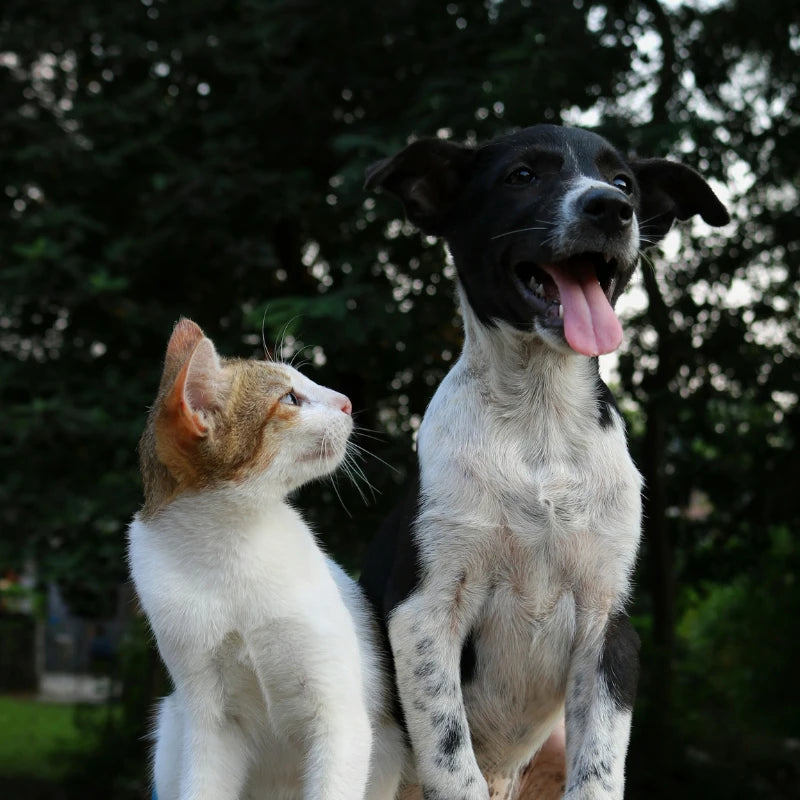How to control pet hair in your home
Pets are a constant source of joy and companionship. They love us unconditionally and look fur-ever adorable. As much as we love having our pets around, cleaning up after them is a lot of work and removing fur is the most difficult part. These tiny sticky hairs can get everywhere-on furniture, carpets, clothes, and floors. Luckily, there are many tricks you can use to maintain your home and keep pet hair under control.
GET THE HAIR FROM THE SOURCE
1.Groom Your Pet Regularly
Regular grooming is important whether your pets shed all year or shed most of their fur seasonally. It helps reduce shedding and improve health. Depending on your pet’s hair type, you can choose from different brushes and groom your pet once a day or once every 1-2 weeks. Not only can it remove pet hair that would otherwise get everywhere in your home, but it also allows you to check your pet’s body for any abnormalities that may need veterinary care. If your pet hates to be brushed, these DELOMO pet grooming gloves are worth a try. You simply wear it to pet your cat or dog like you’re giving him some TLC. All the loose hair, dirt, and dander get stroked right away gently.
2.Clean Your Pet Regularly
Develop a bathing schedule for your pet, like once every 4-6 weeks. The frequency can vary depending upon your pet’s breed and coat type. Bathing can remove loose hair and build-up of dirt and debris from your pet’s coat and help maintains their overall skin and fur health and keep them comfortable. Not to mention, it makes your pet more pleasant to be around. Use pet shampoo instead of human shampoo and be careful not to get shampoo in your pet’s eyes. Once your pet’s hair is dry, you can brush it once more to remove any remaining loose hair.
3.Invest in a Healthy Diet
Shedding is a natural biological process in pets. But your pet’s diet has a direct effect on their skin and coat. A balanced diet provides the nutrition a pet needs for a healthy life and a healthy coat. If your pet’s diet contains low-quality food or ingredients he is allergic to, he could be shedding more as a result.
4.Check with Your Vet
All pets shed to a certain degree, but if your pet is losing more hair than normal, you’ll need to check with your vet. Excessive shedding can result from diseases, bacterial or fungal infections, parasites, sunburn, or medications. Your vet can help you rule out underlying health problems and give you some advice on reducing shedding.
CLEAN HAIR IN THE HOUSE
1.Sweep Floors Daily
Sweeping your floors often prevents pet hair from building up or gathering in corners and under furniture. If the pet hair sticks to your hardwood floor stubbornly and a normal broom doesn’t work, try a rubber broom that’s specifically designed for pet hair removal. It has rubber bristles that catch pet fur more effectively on both hard floors and low-pile carpets.
2.Vacuum Daily
If possible, vacuum your home every day before pet hair embeds itself in fabrics or piles into balls in the corners. For this, a conventional vacuum with various attachments that can access corners and crevices should suffice. But for sucking up embedded pet hair in carpets or upholstery, you’ll need a stronger vacuum cleaner or one that targets pet hair specifically. If you don’t have time to vacuum, a robot vacuum could help as well.
3.Use Pet Hair Removal Tools
Incorporating some pet hair removal tools into your cleaning routine can make a huge difference. Lint rollers with adhesive sheets remove hair from virtually any surface and they come in various sizes for different areas. You’ve probably had some of these before. But if you don’t want to constantly dispose of sticky sheets, try a brush-type roller that does not require rolls of adhesive sheets, such as the DELOMO pet hair removal roller. It utilizes a two-sided brush with fine bristles that create electrostatic adsorption through back-and-forth rolling to pull away hair embedded on upholstered furniture like couches, bedding, carpets, etc.
4.Consider Furniture Slipcovers
A general slipcover is just a large piece of cloth you drape over your furniture to cover it. What’s great is slipcovers are easy to remove and machine washable. If your cats or dogs have favorite chairs they spend their time in or love napping on your couches, covering these pieces of furniture could help protect them from pet hair, stains, odors, and accidents. There is a wide range of styles and colors, so picking one or two slipcovers that match your current home aesthetic shouldn’t be a problem.
5.Additional Tips
To Conclude
We love our pets, but we don’t have to love the extra pet hair. With these tricks mentioned above, keeping your house clean with pets around should be much easier. Just find what does best for you and stick on, pet hair would no longer be a hassle.





Leave a comment